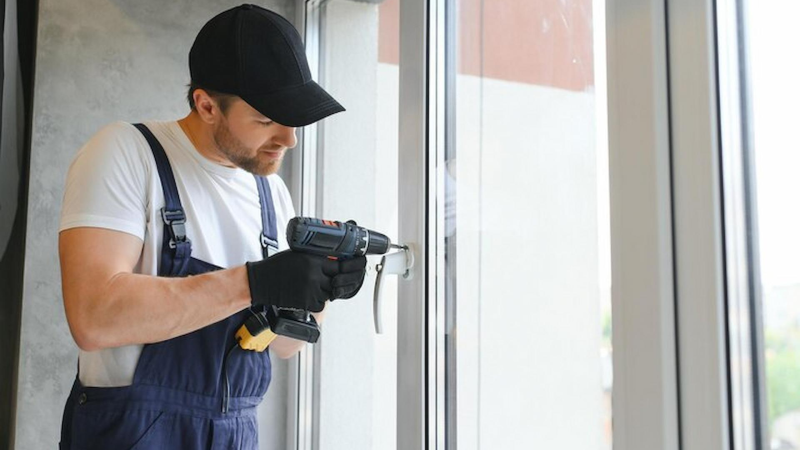A Step-by-Step Guide on How to Change Your Facebook Password for Enhanced Security

In an era where digital privacy and security are paramount, regularly updating and strengthening your online passwords is crucial. Facebook, being one of the most widely used social media platforms, requires users to be vigilant about their account security. Changing your Facebook password is a simple yet effective way to safeguard your personal information from unauthorized access. In this article, we will provide you with a comprehensive, step-by-step guide on how to change your Facebook password.
Step 1: Log in to Your Facebook Account
The first step in changing your Facebook password is logging into your account. Open your preferred web browser and navigate to Enter your login credentials – your email address or phone number and password – to access your account.
Step 2: Accessing Security and Login Settings
Once logged in, locate the small, downward-pointing arrow in the top right corner of the Facebook page. Click on it to reveal a drop-down menu. From the menu, select “Settings & Privacy,” and then click on “Settings.”
In the left-hand column, find and click on “Security and Login.” This section is where you can manage various aspects of your account security, including changing your password.
Step 3: Change Your Password
Under the “Login” section, you will find the “Change password” option. Click on it to initiate the password change process.
Step 4: Enter Your Current Password
To proceed, Facebook will ask you to confirm your identity by entering your current password. This is an essential step to ensure that only authorized users can make changes to the account.
Step 5: Choose a New Password
Once you’ve verified your current password, Facebook will prompt you to enter a new one. Ensure that your new password is strong, combining uppercase and lowercase letters, numbers, and special characters. A strong password is a vital defense against hacking attempts.
Additionally, avoid using easily guessable information, such as your name, birthdate, or common words. Facebook provides a strength meter to help you assess the potency of your chosen password.
Step 6: Confirm Your New Password
After entering your new password, you’ll need to confirm it by typing it in again. This ensures that there are no typos or mistakes in the password entry.
Step 7: Click on “Save Changes”
Once you’ve successfully entered and confirmed your new password, click on the “Save Changes” button. Facebook will then update your account with the new password, enhancing the security of your account.
Step 8: Log Out and Log In Again
For the changes to take effect, it’s a good practice to log out of your Facebook account and log back in using the new password. This ensures that the updated credentials are properly synchronized with Facebook’s servers.
Tips for Maintaining a Secure Facebook Account:
- Use Two-Factor Authentication (2FA): Enable two-factor authentication for an additional layer of security. This usually involves receiving a code on your phone that you’ll need to enter along with your password when logging in.
- Regularly Update Your Password: Change your Facebook password periodically to minimize the risk of unauthorized access. Aim to update your password every three to six months.
- Beware of Phishing Attempts: Be cautious about clicking on suspicious links or providing your login details on unfamiliar websites. Facebook will never ask for your password via email or messages.
- Monitor Account Activity: Regularly review your account activity on the “Security and Login” page. If you notice any unfamiliar devices or locations, take immediate action to secure your account.
Conclusion:
Taking control of your online security is a responsibility that every Facebook user should prioritize. Changing your password regularly is a simple yet effective step in safeguarding your personal information from potential threats. By following the step-by-step guide outlined in this article, you can fortify your Facebook account and enjoy a safer online experience. Stay vigilant, adopt good security practices, and take charge of your digital well-being.
-
How can I change my Facebook password?
- Log in to your Facebook account.
- Click on the downward-pointing arrow in the top right corner.
- Select “Settings & Privacy” and then click on “Settings.”
- In the left-hand column, click on “Security and Login.”
- Under “Login,” find and click on “Change password.”
- Enter your current password, choose a new one, and confirm the change.
-
What makes a strong Facebook password?
- A strong password should include a mix of uppercase and lowercase letters, numbers, and special characters.
- Avoid using easily guessable information like your name, birthdate, or common words.
- Aim for a password that is at least 12 characters long.
-
Can I change my Facebook password from the mobile app?
- Yes, you can change your Facebook password from the mobile app. Open the app, tap the three horizontal lines in the top-right corner, scroll down to “Settings & Privacy,” select “Settings,” and then go to “Security and Login.”
-
Why is it important to change my Facebook password regularly?
- Regularly changing your password helps enhance the security of your account.
- It reduces the risk of unauthorized access, especially if your password has been compromised or if you’ve shared it unintentionally.
-
What if I forget my current Facebook password?
- If you forget your current password, click on the “Forgotten password?” or “Need help?” link on the login page.
- Facebook will guide you through a process to reset your password, usually involving your email address or phone number associated with the account.
-
Can I use the same password for multiple accounts, including Facebook?
- It’s not recommended to use the same password for multiple accounts. If one account is compromised, it could put all your other accounts at risk.
- Use unique passwords for different platforms to enhance overall security.
-
How do I enable Two-Factor Authentication (2FA) on Facebook?
- In the “Security and Login” settings, find the “Two-Factor Authentication” section.
- Follow the prompts to set up 2FA, which usually involves receiving a code on your phone for additional account verification.
-
Is there a way to see my login history on Facebook?
- Yes, under “Security and Login” settings, you can view your login history. This shows the devices and locations where your account has been accessed.
-
What should I do if I suspect unauthorized activity on my account?
- Change your password immediately.
- Review your recent account activity and log out of any unfamiliar devices.
- Enable Two-Factor Authentication for added security.
- Report any suspicious activity to Facebook through the appropriate channels.
-
Can someone else change my Facebook password without my knowledge?
- Changing the Facebook password typically requires knowledge of the current password.
- Enabling Two-Factor Authentication adds an extra layer of security, making it more difficult for someone else to change your password without your knowledge.
Remember to stay vigilant about your online security, use strong and unique passwords, and leverage additional security features provided by Facebook to protect your account from unauthorized access






